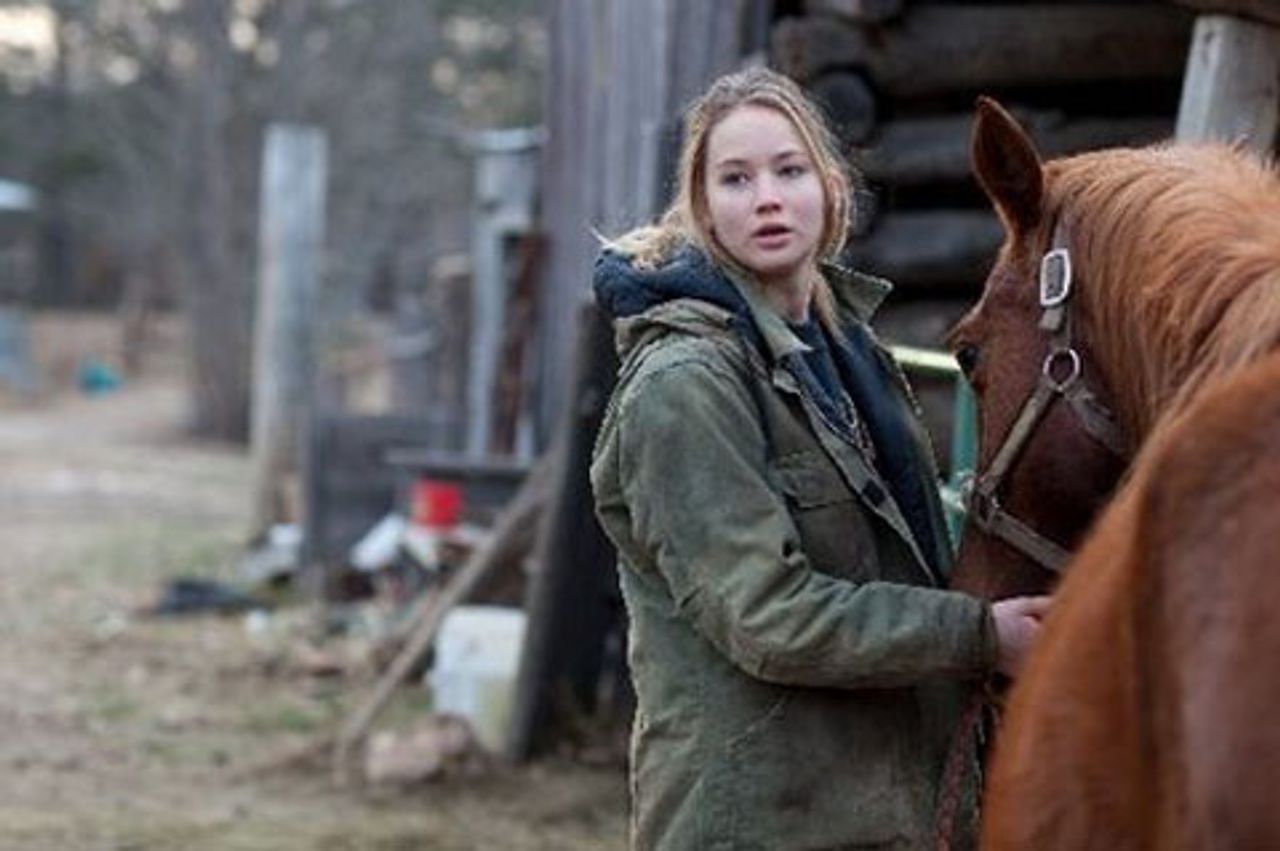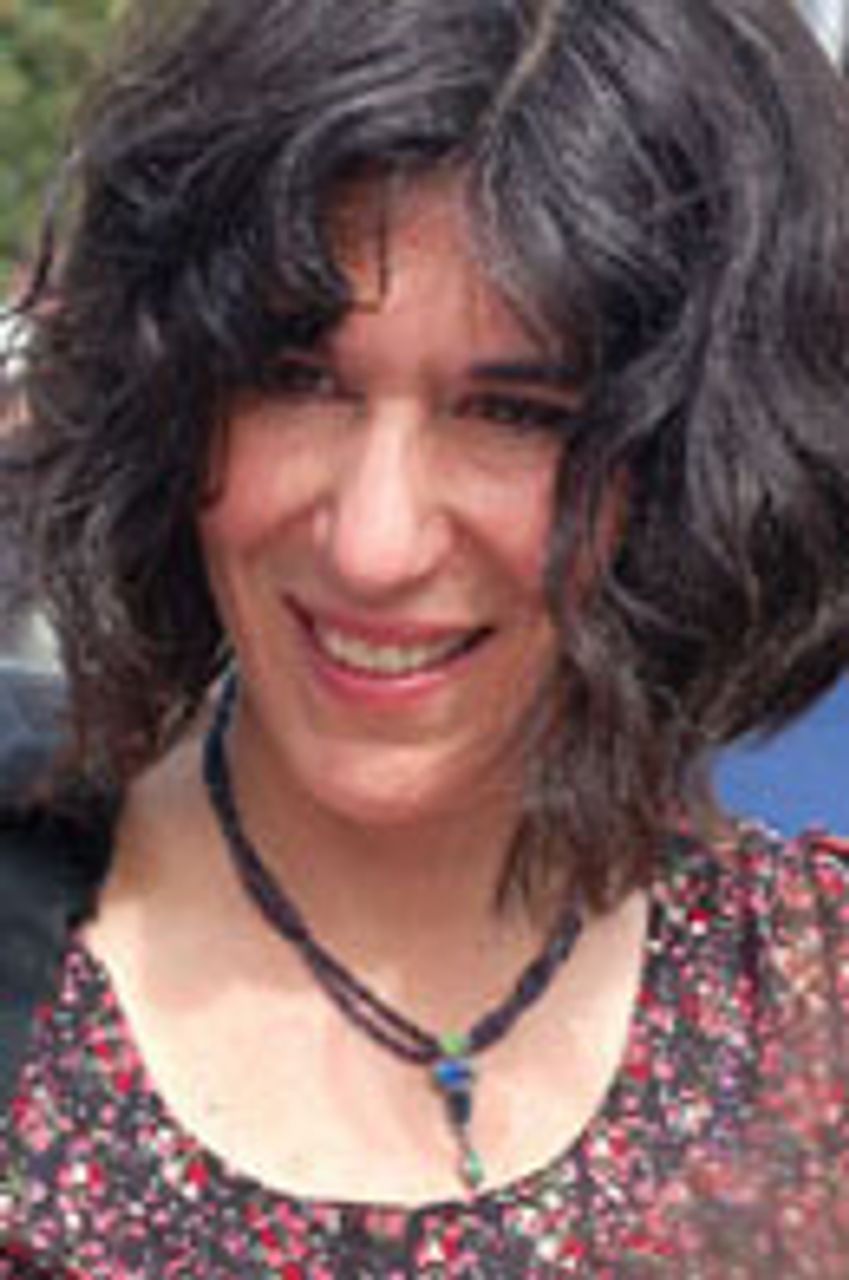Winter’s Bone, directed by Debra Granik from a script written by Granik and Anne Rosellini, won the 2010 Sundance Film Festival’s grand jury prize for best drama and has received well-deserved critical acclaim since its US and European releases. The movie is set in the poverty-stricken Ozark mountains and based on the Missouri fiction writer Daniel Woodrell’s novel of the same name.
Winter’s Bone centres on the determined efforts of 17-year-old Ree Dolly (Jennifer Lawrence) to track down her father who, after becoming embroiled in the illegal meth-amphetamine business and then arrested, has used the family home as a bail bond and disappeared.
 Winter's Bone
Winter's BoneRee is responsible for sustaining and keeping a roof over the heads of her incapacitated mother and her two young siblings but finds herself challenging local underworld figures. Unless she can find her father or pay the bond to the authorities, the house will be confiscated and the family evicted. (See: “An Ozark noir: Winter’s Bone”)
Winter’s Bone director Debra Granik (Snake Feed [1997] and Down to the Bone [2004]) spoke with the World Socialist Web Site following screenings of her feature at this year’s Melbourne Film Festival. The 100-minute movie was made for just under $2 million and is due for an Australian commercial release in November.
Richard Phillips: What attracted you to Daniel Woodrell’s story?
Debra Granik: I work very closely with a creative partner, Anne Rosellini who produces my films, and we co-wrote the screenplay, which is a very close adaptation of Daniel Woodrell’s novel. Anne and I and were drawn to this very well-constructed, well-shaped and conceived American tale and, in particular, the female protagonist Ree. She is a complex somewhat unexpected figure with a lot of facets and was someone we really cared about and wanted to watch. It’s very important to me to care about the characters in films that I’m making.
The other factor was that it’s about a place in the United States that I hadn’t been to before or knew about and which raised a whole series of interesting questions. If I went there what would I see visually and what could go on screen? How would it be discussed and interpreted?
It’s always difficult to put on screen material that isn’t all that well-known and that raises questions about contemporary American society, so that was a challenge.
Are squirrels and deer still eaten in the twenty-first century in the United States? Is this common? How will Ree make a go of it? Does she have the potential survive? These were all questions that I hoped the film would spark with audiences because they did in me when I read the book.
RP: Woodrell also wrote Ride with the Devil, the civil war story that later became an Ang Lee film. This is a rather different story to Winter’s Bone.
 Debra Granik
Debra GranikDG: Yes, but Daniel really is a lover of his region [Missouri]—it’s his muse—and there’s no stone he wouldn’t want to look under and explore, whether it be the civil war or the plight of people in the Ozarks. In Winter’s Bone he’s observing the impact of meth-amphetamine entering this area and what it takes for people to survive and get around it. He’s willing to look into unusual things.
He recounted to us that he was standing in line at a convenience store in this part of southern Missouri and there was a teenage girl in front of him and there was a child on each side of her. It turned out she was the older child and was responsible for the others and all she had to try and feed all three of them was $7. How was she going to do this, did she have any other resources and were there any adults in her life? Here was someone who was very young and yet encumbered with a lot of serious responsibilities. This experience, he said, was a direct source of his inspiration for Winter’s Bone.
RP: Your movie certainly pulls no punches about the soul-destroying poverty and other social problems blighting the area. When did meth-amphetamines begin to infiltrate the region and was it related to job downsizing and the collapse in employment?
DG: There’s a book by an investigative Missouri journalist Nick Reding called Methland: The Death and Life of an American Small Town, which details these processes and exposes how the big corporations—big farmer and big ag [agriculture]— have hollowed out the American heartland from the standpoint of employment. His material is powerful and non-negotiable and I suspect he would date meth becoming truly infectious and destructive in these areas to the last 15 years.
There were several communities that got really bad raps in the media, as if they were the meth capitals of the United States. This was exaggerated but the Ozarks was one of these regions; it was an early starter and got it really bad. And yes, it was related to high unemployment but the hill country has always been outside the mainstream economy and with high unemployment. It’s always been difficult to survive there and so a form of frugal sustainability developed—a form of ingenuity about how to get things you needed with the little money you had.
To most viewers Ree and her family live in a hovel but this is how these people live and neighbours’ homes are the same. They know that they’re not materially affluent but they don’t regard themselves as being in poverty. Because they own land and have a long term-heritage with a specific place in the US and haven’t been forced out of it, they feel that they’re not impoverished even though they obviously are below the US poverty line.
RP: What impact did the social conditions have on you?
DG: I spent a lot of time figuring out how to depict the area and poverty accurately without exoticising it or misinterpreting it. This is very important.
The matriarch of the area where we shot the film was a greeter [of customers] in the huge Wal-Mart chain and the bedroom wall in her two-room cabin had xeroxed commendations of her work from the company. She earns a poverty wage from this behemoth corporation and no benefits. While she proudly displays these commendations, the company just treat her like a number—to them she’s a nothing. The reason she’s not destitute is because she’s a Wal-Mart greeter but she can’t survive on the basis of her wages. Her wages don’t even come close to that.
All her family work in the service economy and they pool their wages. They don’t have a mortgage but they have taxes and they have needs and are forced to survive by eating deer meat. Even though they get sick of deer they keep eating it through the winter because this is their only source of protein, along with food from Wal-Mart that she’s entitled to purchase with her negligible employee discount.
What blew my mind was recognising these things about America, issues that most people never know. This woman has a hill life and a town life. This is 2010 and so there’s a satellite dish in her yard and yet she’s cooking squirrel and deer. These were incredible contradictions and contrasts.
Dependency on places like Wal-Mart will increase, and so the ability of hill people to self-survive will probably diminish. Communities outside the mainstream are facing a perilous future. At the same time, defiance is a regional characteristic that people from these areas take pride in.
RP: The scene where Ree meets with a military recruiting sergeant is interesting and points to the fact that thousands of army recruits come from these regions.
DG: Yes, they’re major recruiting grounds. Third and fourth generation military families are common because the military is the only viable form of employment. People joined hoping to get an education, not be sent to war, but there never was any peace period between the Vietnam War, the Central America interventions and the conflicts in Iraq and Afghanistan. They volunteer and are deployed into war situations because it’s a steady financial stream to the family. Some families have been drawn into service for more than a century and we could not ignore this.
RP: Commercial film and television regularly satirise or poke fun at people from these areas but these social inequalities are not just confined to these regions. How do you see this playing out?
DG: People in the Ozarks think they have a greater capacity to survive and they joke about recession. They tell you, “We’ve been permanently in recession and know how to do four things: to make do, make it last, wear it out or do without. Our life is more sustainable and we don’t have the same addictions as the stock market and other things that we are supposed to need.”
But it’s true I do wonder about this inequality and how it’s impacting on my country. As I travel across America, going to various airports, I think about the fact that many of them are like those in the so-called Third World. There’s such chaos, and the infrastructure breakdowns in the US have become chronic. As my home city sizzles in the heat I keep thinking when the grid is going to give out.
I wonder about a lot of things, about the fact that the white-collar criminals are lightly punished and then their bonuses kick back in even after the company has destroyed the life savings of millions of people. I wonder about all this. I had no illusions in Obama. I didn’t expect anything from him or other political figureheads that just manage the details for big business but I can’t figure out where this is heading.
I recently wrote a little piece about the ending of an early Werner Herzog film called Stroszek, which I really liked. It’s about a German man who comes to live in the US but the economic cruelty of the situation just brings him down, it basically destroys him.
The movie’s final scene shows his truck is spinning around in a parking lot and it’s on fire. It’s a parking lot for a Native American souvenir shop and inside there’s a machine with a mechanical chicken in it. A Native American policeman at this place picks up the two-way radio and says: “We can’t stop the dancing chicken”. I guess that’s my prevailing impression of the country I live in. It’s so out of control, so frenzied and poignantly teetering on the edge.
